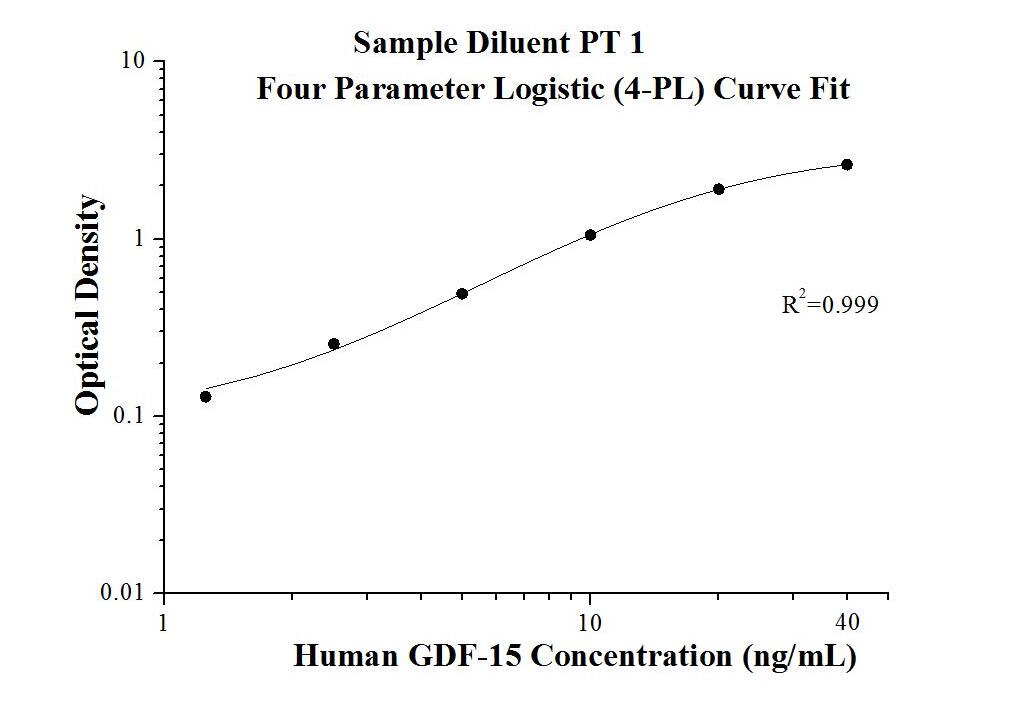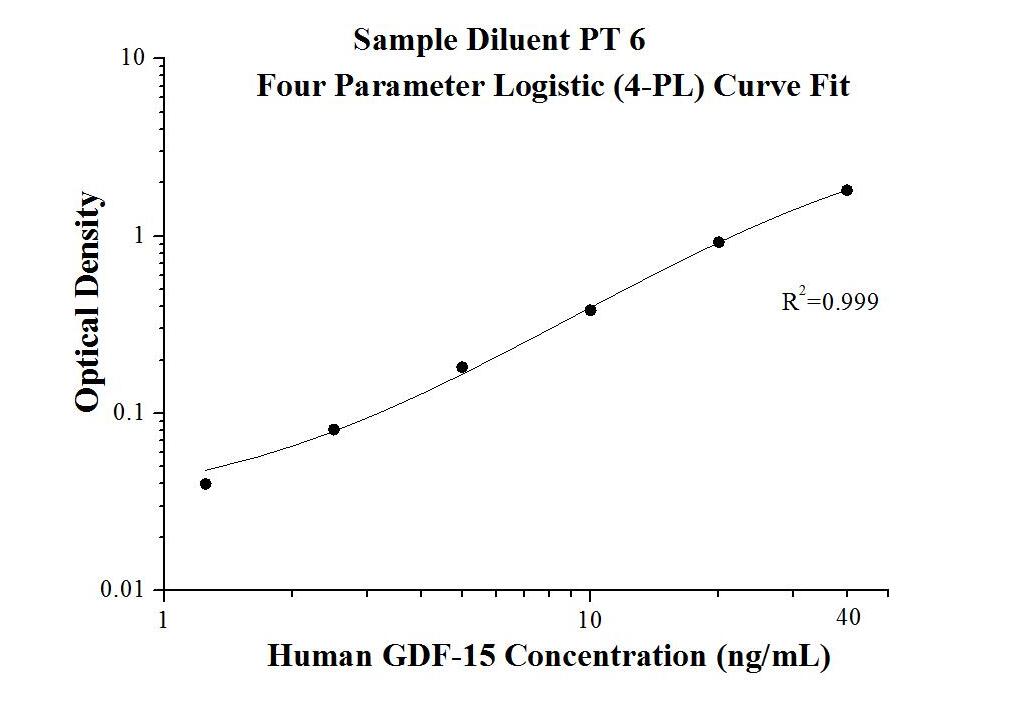Human GDF-15 ELISA Kit
Cat no : KE00108
Synonyms
GDF 15, GDF15, MIC 1, MIC1, NAG 1, NRG 1, NSAID activated gene 1 protein, NSAID regulated gene 1 protein, PDF, PLAB, Placental TGF beta, PTGFB
Validation Data Gallery
Product Information
KE00108 is a solid phase sandwich Enzyme Linked-Immuno-Sorbent Assay (Sandwich ELISA). The GDF-15 ELISA kit is to be used to detect and quantify protein levels of endogenous GDF-15. The assay recognizes human GDF-15. An antibody specific for GDF-15 has been pre-coated onto the microwells. The GDF-15 protein in samples is captured by the coated antibody after incubation. Following extensive washing, another horseradish peroxidase (HRP)-conjugated antibody specific for GDF-15 is added to detect the captured GDF-15 protein. For signal development, followed by Tetramethyl-benzidine (TMB) reagent. Solution containing sulfuric acid is used to stop color development and the color intensity which is proportional to the quantity of bound protein is measurable at 450 nm with the correction wavelength set at 630 nm.
| Product name | Human GDF-15 ELISA Kit |
| Tests | 1 X 96 well plate |
| Sample type | Serum, Plasma, Cell culture supernatants, Urine |
| Assay type | Sandwich |
| Sensitivity | 0.3 ng/mL |
| Range | 1.25-40 ng/mL |
| Reactivity | Human |
| Tested applications | Sandwich ELISA |
| Gene ID (NCBI) | 9518 |
Recovery
| Sample Type | Average | Range |
|---|---|---|
| Cell culture supernatants | 107% | 93%-119% |
| Urine | 86% | 73%-99% |
| Human plasma | 79% | 71%-92% |
| Human serum | 83% | 73%-91% |
IntraAssay
| Sample | n | mean ( ng/mL) | SD | CV% |
|---|---|---|---|---|
| 1 | 20 | 6.4 | 0.6 | 9.4 |
| 2 | 20 | 15.1 | 1.6 | 10.4 |
| 3 | 20 | 40.6 | 2.9 | 7.1 |
InterAssay
| Sample | n | mean ( ng/mL) | SD | CV% |
|---|---|---|---|---|
| 1 | 24 | 6.8 | 0.4 | 5.1 |
| 2 | 24 | 13.9 | 0.9 | 6.3 |
| 3 | 24 | 42.5 | 1.4 | 3.3 |
Background Information
Growth differentiation factor 15 (GDF-15), also known as macrophage inhibitory cytokine-1 (MIC-1), is a protein of the transforming growth factor beta (TGFb) superfamily. GDF-15 is a stress-induced cytokine and associated with hypoxia, inflammation and oxidative stress, it is also released from endothelial cells after stimulation with pro-inflammatory cytokines. Its levels are elevated in diseases such as acute respiratory distress syndrome, pulmonary hypertension and heart failure. GDF-15 is associated with cancers, cardiovascular diseases, and inflammatory diseases. GDF-15 may have a paracrine role in the modulation of adipose tissue function and body fat mass. GDF-15 is highly expressed in the placenta. GDF-15 is known to be involved in human embryo development and necessary for the maintenance of pregnancy.
Properties
| Storage Instructions | All the reagents are stored at 2-8℃ for 6 months or -20℃ for 12 months. Refer to the protocol for further storage instructions. |
| Synonyms | GDF 15, GDF15, MIC 1, MIC1, NAG 1, NRG 1, NSAID activated gene 1 protein, NSAID regulated gene 1 protein, PDF, PLAB, Placental TGF beta, PTGFB |
Publications
| Species | Sample Type | Title |
|---|---|---|
Cell Oncol (Dordr) GDF15 induces chemoresistance to oxaliplatin by forming a reciprocal feedback loop with Nrf2 to maintain redox homeostasis in colorectal cancer | ||
Cell Rep Delamination of trophoblast-like syncytia from the amniotic ectodermal analogue in human primed embryonic stem cell-based differentiation model. | ||
Sci Rep Local anesthetic lidocaine-inducible gene, growth differentiation factor-15 suppresses the growth of cancer cell lines | ||
Biomed Pharmacother Shexiang Baoxin Pill treats acute myocardial infarction by promoting angiogenesis via GDF15-TRPV4 signaling | ||
J Stroke Cerebrovasc Dis Neuregulin 1 as a Potential Biomarker for Disease Progression in Moyamoya Disease: A Case-Control Study in Chinese Population |



